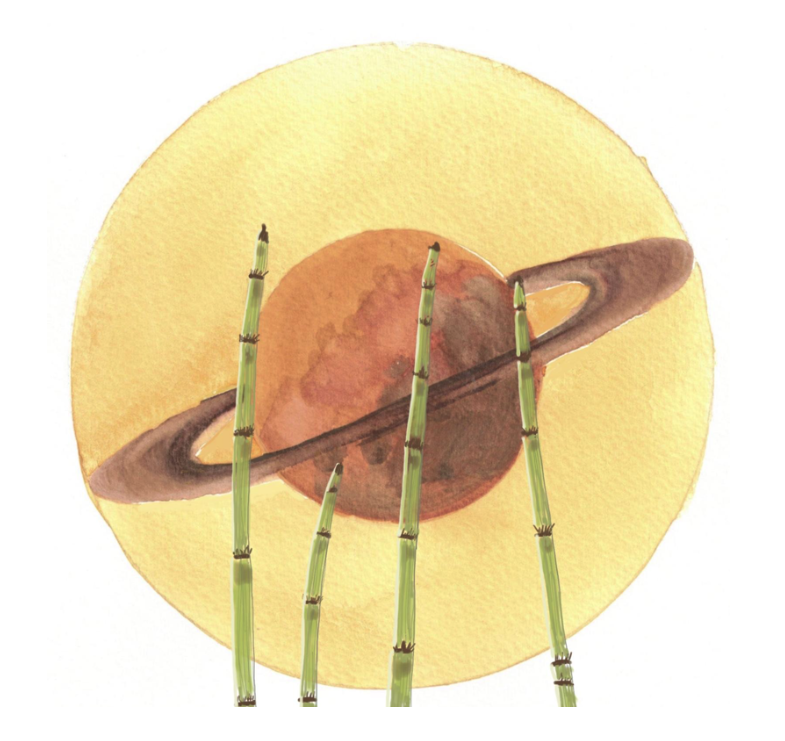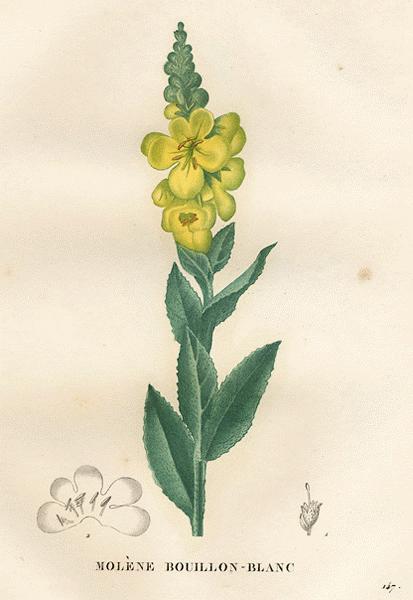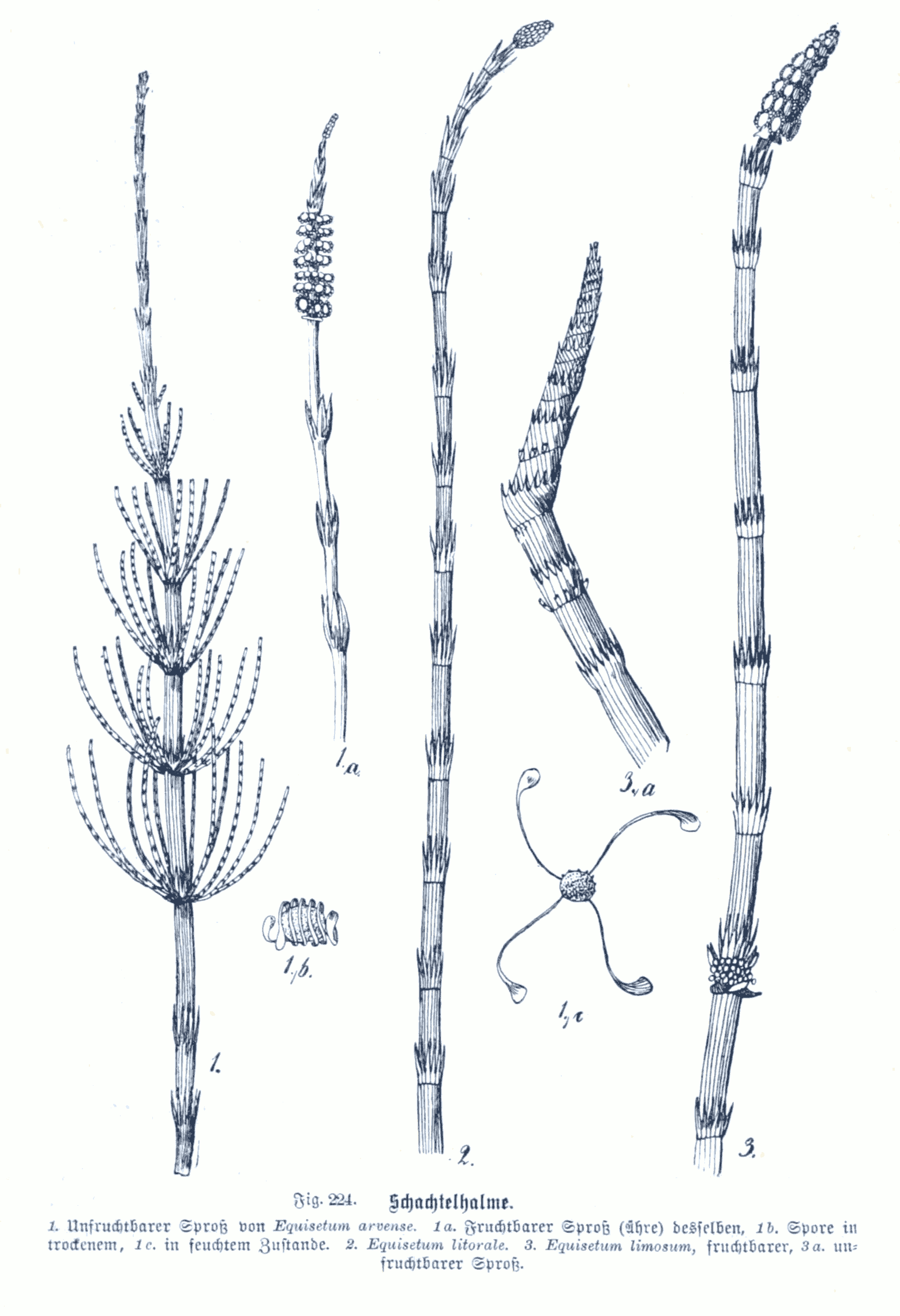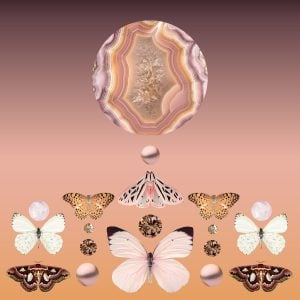Saturn's Plants Are Symbols of Strength

When following the history of Western medicine back to its origins, there exists a deep relationship between astrology and herbalism, a system used to diagnose disease and leverage plants for their healing effects. Born from a collaboration of Egyptian and Greek. knowledge in the Hellenistic period, Iatromathematica was the synthesis between astrology and herbalism.
According to the doctrine of Babylonian melothesia—the science of zodiac signs and the human body—it was thought by the physicians of the Classical and eventually the Medieval and Renaissance periods that the seven visible planets have energetic correspondences on Earth, and that their qualities are reflected in our bodies and constitutions. The planets’ qualities were also observed in the flora, fauna, and minerals of our natural world, and held clues as to what cures they were useful for.
What do the stars have in store for you this month?
Nicholas Culpepper, who had an intimate understanding of astrology and herbalism, is famous for this quote, which reveals the value once placed on astrology and medicine belonging together: “Physick (medicine) without astrology is like a lamp without oil.” Though this cosmology is no longer the prevailing worldview, it is alive and well in the arts of medical astrology, herbalism, and magic, providing a means for us to come into relationship with planetary and plant allies in our holistic practices. Knowing astrology and the qualities of the planets is a “lamp” that illuminates a map to understanding our bodies and their connection to nature and the cosmos.
In this series, we will introduce the correspondences between each of the seven classical planets and the plants they are associated with; we will explore how to see planets in plants so that we can identify their nature. Finding plants in their environments gives us clues as to their uses and qualities, as they have adapted to environments that are similar to imbalances in our bodies we need to treat. Working with these plants medicinally invites their quality into us so that we may take on their balancing effects, helping us enjoy herbs in our daily lives with more confidence and clarity.
Your Vedic astrological chart contains the wisdom of the ages.
[Note: This series is for entertainment and inspirational purposes only, and not intended to replace licensed medical care.]
Part 7: SATURN
Qualities
Saturn as a planet is known as the greater malefic in classical astrology, meaning it can potentially signify and bring about our greater challenges to us in life. These challenges, however, tend to make us stronger, increasing our capacities to endure. Saturn’s light appears dusky and muted, casting a foreboding presence, which made ancient astrologers wary of this distant planet. Saturn represents boundaries, limits, discipline, authority, rules, traditions, and elders. It signifies structures and foundations and is a stern judge that cuts through to the undeniable truths of life.
Saturn is furthest from the sun of all of the visible planets in our solar system, so was assigned the qualities of coldness and dryness. Saturn’s home signs, by day Aquarius, and by night Capricorn, are in polarity to the sun’s sign, Leo, and the moon’s sign, Cancer. Saturn is in opposition at once to the warm and dry qualities of the sun and the cool and wet qualities of the moon. The sun warms and welcomes, while Saturn is cold and strict. The moon soothes and nurtures, while Saturn negates and prefers solitude. The sun imparts warmth and relaxation and encourages circulation in the body, where Saturn tends to constrict and stiffen tissues, and to depress warmth. The moon imparts moisture and regeneration, where Saturn tends to deplete and dehydrate the body system.
Read me: The Moon’s Watery Vibes Can Be Found in These Lunar Plants
Read me: Channel the Sun’s Vitality With These Solar Plants
So, with Saturn’s cold and dry planetary influence, along with it’s serious and inhibiting nature, what is it good for exactly? As mentioned, Saturn’s influence over the ability to persevere, to set healthy boundaries, and to have discipline are an important part of self-responsibility and maturity. Since Saturn rules old age and eldership, wisdom and discernment are some of its greatest attributes. In the body, Saturn promotes stability, firmness, and bone density, and Saturn’s remedies can balance excesses in moisture, heat, and inflammation.
Organ Systems
The major organ system traditionally attributed to Saturn is our bone structure, and along with it any tough, dense, structural body parts like teeth, hair, nails, connective tissue, and the firmness of our skin. Saturn is also traditionally associated with the spleen, the primary filter of our blood, which helps build red blood cells to fortify our immunity. Interestingly enough, Saturn rules over the ears—the right one, to be exact—and some of Saturn’s remedies can be used to cure ear infections.
Health imbalances caused by an excess of Saturnian energy tend to be discomfort caused by coldness, dryness, and stiffness. Specific diseases include tremors, gout, hemorrhoids, internal ruptures, toothache, arthritis, and broken bones. Depression, pessimism, and fearfulness are some of the emotional disorders associated with Saturn. Since Saturn rules over most of winter, seasonal depression could also be considered a Saturnian health challenge.
Capricorn and Aquarius both present cold and dry Saturnian constitutions in similar but elementally different ways. Both signs can indicate vulnerabilities to stiffness and dryness in body tissues and depression. The hot and wet air sign Aquarius combines with cold and dry Saturn to create a sanguine/melancholic constitution, which can suffer from depleted energy, shin pain, and dehydration. Cold, dry, and earthy Capricorn combines with cold and dry Saturn to present a purely melancholic constitution, prone to knee pain, arthritis, poor circulation, and low mood.
Saturnian Plants
Saturn’s plants can be found growing along borders, in damp conditions, or in dry soils. They tend to be hardy, dry, and stiff and can grow to substantial sizes. Their leaves are often thick and hairy. Aligned with Saturn’s solitary tendencies, some Saturnian plants grow alone and take a long time to develop into their full potential. Saturn’s culinary plants are dense, grounding, nourishing roots like parsnip, burdock, and angelica. Spinach and other mineral-rich, bone-building greens are also considered Saturnian, as are the aromatic herbs sage and cumin which encourage circulation, respiratory health, and digestion. Some of Saturn’s plants are extremely cooling and drying, making them poisonous if used incorrectly. Nightshade is a prime example.
Comfrey (Symphytum)
Comfrey, also known as “boneset” or “knit bone,” grows in damp, grassy places. It is rich in vitamin C and calcium and has anti-inflammatory properties, and is a traditional herbal remedy used to treat bruises, sprains, and bone fractures. Its mineral-rich qualities can internally “knit” bones and connective tissues back together. It contains allantoin, that when used topically can help heal wounds. An ointment or compress made from comfrey can also soothe joint and arthritis pain. There has been controversy over comfrey, in that its alkaloids have been discovered by scientists to cause liver toxicity. The tests that produced these results, however, are criticized by herbalists, who know that comfrey has been used safely for centuries. These laboratory findings are the result of extreme doses being administered to animals, which does not reflect comfrey’s careful traditional uses. It is still good to consult an herbalist if unsure, especially if you are considering ingesting this effective herb.
Horsetail (Equisetum)
Horsetail is a prime Saturnian plant, for many reasons, including its remarkable ringed coloring that reflects the rings of Saturn. It is a dry, fibrous plant that grows along roads and water banks. Old age, another Saturn signification, is reflected in horsetail, as it is a very old, surviving primordial species thought to have endured over 375 million years on earth. Horsetail is very rich in minerals and vitamins, including vitamins B, C, E, K, and also potassium, calcium, magnesium, iron, zinc, copper, and silica. As a result, it is excellent for building strong bones, teeth, hair, nails, and skin. Horsetail tea can help improve bone density in those suffering from osteoporosis and can clear water retention, urinary tract infections, and kidney and bladder stones. Horsetail itself is so strong and fibrous, it was used to polish metal in ancient times.
Mullein (Verbascum)

Mullein grows very tall and straight, up to nine feet. It is a biennial, taking time to come to maturity, and tends to grow in dry soil. It has a strong, substantial, narrow stalk, and its dry hairy leaves hint at its affinity for the cilia of the respiratory tract. Mullein tea and tinctures have been used to treat all manner of respiratory infections, including tuberculosis, asthma, and dry chronic coughs. A poultice of mullein can help heal hemorrhoids—a Saturnian disorder—and mullein oil combined with garlic is a well-known folk remedy for ear infections.
Art by Debra Stapleton
What do the Tarot cards say about your life? Find out now. Get a FREE Tarot reading.





